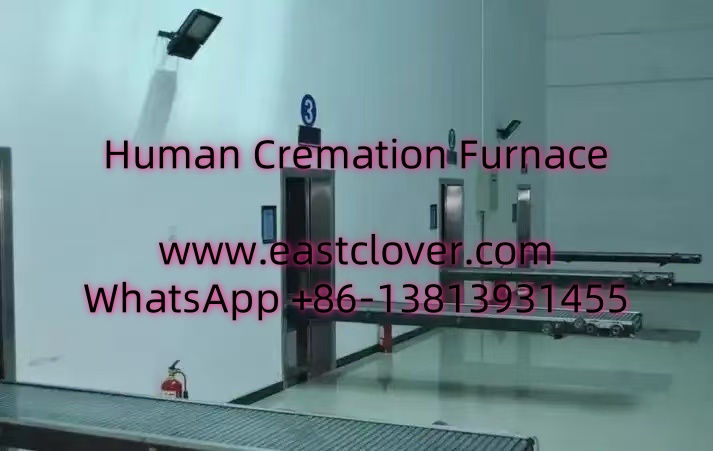Introduction
In times of crisis—whether due to natural disasters, pandemics, or large-scale emergencies—the need for efficient and dignified handling of deceased individuals becomes critical. Mobile cremation furnaces have emerged as a vital solution to address urgent mortality management needs. Their rapid deployment, adaptability, and compliance with environmental standards make them indispensable in crisis response scenarios. This news explores the technology behind mobile cremation systems, their role in urgent situations, and their impact on public health and community resilience.
Mobile Cremation Furnace: An analysis
A mobile cremation furnace is a portable system designed to perform cremations efficiently while adhering to safety and environmental regulations. These units are typically mounted on trailers or modular platforms, enabling quick transportation and setup. Key features include:
- Portability: Built for easy relocation to disaster-stricken or remote areas.
- High-temperature combustion chambers (1,400–1,800°F) for complete and hygienic remains processing.
- Emissions control systems to minimize pollutants like particulate matter and mercury.
- Automated controls for consistent operation with minimal manual intervention.
Rapid Installation Capabilities
Design for Swift Deployment
Mobile cremation units are engineered for immediate use. Their modular components, such as pre-assembled fuel systems and exhaust scrubbers, reduce setup time to hours instead of days. Utilities can often connect to local power grids or use onboard generators for self-sufficiency.
Installation Process
- Site Assessment: Teams evaluate terrain, accessibility, and local regulations.
- Unloading and Assembly: Crane-assisted placement of the unit and connection of peripherals.
- Testing: Calibration of temperature controls and emissions systems.
Advantages of Speed
- Mitigates public health risks from delayed remains management.
- Reduces logistical strain on overwhelmed local infrastructure.
- Cost-efficient compared to constructing permanent facilities during crises.
Urgent Needs & Crisis Response Applications
Pandemic Management
During the COVID-19 pandemic, cities like New York and Mumbai deployed mobile crematories to manage surges in fatalities, preventing overcrowding at hospitals and morgues.
Natural Disasters
After hurricanes, earthquakes, or floods, mobile units assist in regions where traditional crematoriums are damaged or inaccessible.
Conflict Zones and Refugee Camps
In areas with disrupted infrastructure, these furnaces provide a dignified means to handle casualties while minimizing disease transmission.
Large-Scale Accidents
Mass casualty incidents, such as industrial accidents or transportation disasters, benefit from immediate on-site deployment.
Benefits in Crisis Scenarios
- Immediate Deployment: Operational within 24–48 hours.
- Scalability: Multiple units can be dispatched to high-demand areas.
- Dignity Preservation: Ensures respectful treatment of the deceased during chaotic events.
www.southclover.com
Mobile cremation furnaces represent a critical advancement in emergency response infrastructure. Their ability to operate under adverse conditions, coupled with rapid installation and environmental compliance, makes them essential for mitigating public health risks and upholding human dignity during crises. As global challenges like climate change and pandemics intensify, investing in these systems will remain a priority for resilient communities.
Frequently Asked Questions (FAQs)
How does a mobile cremation furnace differ from a traditional crematorium?
Mobile units are compact, transportable, and designed for temporary use, whereas traditional crematoriums are fixed structures requiring permits and longer setup times.
How quickly can a mobile unit become operational?
Most systems can be ready within 6–12 hours after arrival, depending on site preparation and utility connections.
Are emissions from mobile units environmentally safe?
Yes. Advanced filtration systems meet or exceed international emissions standards, including those for mercury and dioxins.
Can these furnaces handle high volumes during crises?
Modern units process 8–12 bodies per 24 hours, and multiple units can be deployed simultaneously to scale capacity.
What safety measures protect operators and communities?
Operators receive specialized training, and units include safety interlocks, real-time emissions monitoring, and biohazard containment protocols.
Are mobile cremation services costly for governments or NGOs?
While initial costs vary, they are often more economical than constructing permanent infrastructure or managing overcrowded morgues during emergencies.
Can these units be customized for specific cultural practices?
Yes. Configurations can accommodate religious rites, such as witnessed cremations or specific post-process handling of ashes.
Are mobile crematories only used in emergencies?
No. They also serve remote communities lacking permanent facilities or during festivals/events with temporary spikes in mortality.

Comments are closed